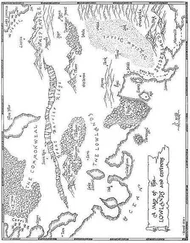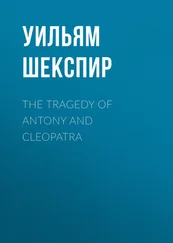The second contestant is Mohammed bin Sa’id al-Dhabhani, also known as Gemaleddin, who was both a Sufi and a mufti (religious leader) in Aden. Although he died in 1470, somewhat late to have met Zheng He in 1417, he would have been alive in 1433 when the seventh voyage picked up an envoy from Aden who, upon his return from China, may have furnished the necessary details concerning tea production. Alternatively, tea drinking may have been a recognized practice in Arabia using precisely the tea which it is recorded that the Treasure Fleet carried for trading purposes. Upon the cessation of the Chinese visits after 1433, tea would have been impossible to obtain, and a substitute could have been sought. The most intriguing thing about the al-Dhabhani story as recorded by al-Djaziri is that it specifically refers to the fact that he had visited Ethiopia as a missionary and had learnt about the benefits of coffee drinking there. As well as being a religious leader, Gemaleddin was also a renowned man of science. There is some speculation in early European writings, unsupported by primary sources, that Gemaleddin gave coffee his mufti’s seal of approval in 1454, and that his endorsement led to the rapid spread of coffee drinking in the Sufi community.
The third candidate is Abu Bakr al-’Aydarus, another Sufi who was patron saint of Aden. However, he died in 1508, which would appear to be quite long after coffee drinking had become established amongst the Sufis, as can safely be determined from the historical and archaeological record.
The persistence of such legends identifying the first coffee drinker as a Sufi master in the era shortly after the arrival of the Chinese Treasure Fleet bearing tea, the mutual interest in the materia medica of the Arabs and the Chinese, and the active presence of Sufism in the region all suggest that there may be a new, compelling version of the tale of the discovery of coffee to replace the time-worn myth of Kaldi. Although it is conjecture, the story is extrapolated from known facts and involves historical figures, all of which is a distinct improvement on that of the goatherd. Its hero is the Mufti of Aden, Gemaleddin, to whom we will ascribe the not unreasonable age of three score years and ten at his death in 1470.
As a young man, Gemaleddin was in Aden when the Treasure Fleet of Zhe Heng arrived at the port in 1417. He was struck by the description of the Chinese drinking an infusion they found refreshing called tea, made with dried leaves mixed with hot water. Gemaleddin later became a Sufi and a scholar respected in matters of both science and religion. In his early thirties he made the pilgrimage to Mecca, where he met a Sufi who described how he had seen the Sufis drink tea in China to help them stay awake during night prayers. Gemaleddin heard that another Treasure Fleet from China was at that moment on its way to Jiddah, the nearest port to Mecca, and so he hurried to meet it. As he was by now a man of great distinction, he was welcomed aboard the flagship by the fleet’s commander, Hong Bao, where he drank tea with the dignitaries, noted its stimulating effect, and questioned them closely about the origins of the tea plant and the methods of drying the leaves. The description of the tea plant did not correspond with that of any plant he knew of in Arabia, and it appeared that the growing conditions required for tea would make it ill suited to the region. Gemaleddin wondered whether he might somewhere find a plant with similar properties if it could be infused in the same way. Having previously decided to go on a missionary expedition to Abyssinia, he began to look out for any as yet undiscovered plants which might have the desired effect. From Arab slave traders bringing captives from the Oromo tribe in the west of Abyssinia he learnt of a plant there called bun , which was supposed to make goats very lively when they ate it. He went to the Oromo, discovered coffee, and tasted infusions of the leaves, which he dried in the manner described to him by the Chinese. He noted that the stimulatory effect of the drink was very similar to that of Chinese tea. He also took samples of the cherries of the coffee bush back with him to Aden. The flesh of the cherry made a more palatable and stimulating drink than the leaves, and so Gemaleddin developed the drink called qish’r , which is still widely drunk in Yemen today, often flavoured with ginger. Gemaleddin encouraged his disciples to drink qish’r and it became a part of Sufi ritual; but, versed as he was in the mysterious science of alchemy, he continued to experiment and was struck by the enormous changes that took place in the rejected stones at the heart of the coffee cherry when they were roasted on a pan. These pale green, tasteless, and unpromising beans transformed into brown polished nuggets with an overwhelmingly delicious aroma and a bitter but alluring flavour when ground and boiled. The change to the coffee bean represented on a physical level the transformations that Sufism wrought upon the human soul, and the fact that coffee enabled adherents to remain awake during their night prayers was further proof of its spiritual qualities. The drink was also as black as the Ka’ba, the sacred black stone at Mecca to which all Muslims must make the Haj. Gemaleddin’s learning and piety had uncovered a mysterious substance that assisted the Sufis in their communion with God.
Hence coffee stands before us finally unveiled, discovered by an alchemist who identified in its transformation the means of bringing men closer to God, in the same way that the use of communion wine, which is variously forbidden and allowed in different branches of the Christian ritual, has underlying it much of the same transformational thinking. That the Sufis should have adopted a similar ritual use of a communal drink is not surprising, and the fact that coffee is known as the ‘Wine of Araby’ also takes on another dimension of meaning in this context.
The way in which coffee was eagerly adopted by Sufism illumines the alchemical element in the new myth. We have seen that ‘The Sufi master operates upon the base metal of the soul of the disciple and with the help of the spiritual methods of Sufism transforms this base metal into gold.’ Even those who do not like the flavour of coffee usually concede that it has a peculiarly seductive aroma when freshly roasted, and when the beans are broken up by grinding or pulverizing they release a new set of aromas that are if anything even more beguiling. The transformation of coffee from dull, sublunary vegetable matter into a substance of almost divine aroma and extraordinary flavour is a compelling symbol of what alchemy and its Sufi followers wished to achieve with their spiritual quest. In every sense, then, coffee brought them closer to God and it became a vital component of their communal prayers.
The ritual use of coffee is itself a hypothesis, but one supported by archaeological evidence, the first that we have come across in our peregrinations around coffee’s prehistory. Excavations at Zabid have shown that initially ( c .1450) coffee was almost certainly served amongst the Sufi community at their dhikrs (communal worship, usually at night) from a ladle dipped into a glazed bowl named a majdur . Previously, this sort of pottery had not been glazed, which suggests that coffee was deemed of higher importance than other liquids. Shortly afterwards, smaller glazed bowls started to be produced at Haysi, a nearby town. These would have been passed around from person to person, replacing the ladle. Significantly, these small bowls bear striking resemblance in shape to the Chinese porcelain tea-drinking bowls of the same era, and some have rudimentary imitations of the classic blue and white Chinese patterns. The passing around of coffee was one of the reasons why it was banned in Mecca in 1511 as sharing was associated with alcohol consumption. Some Sufi sects today still pass around a drinking bowl of coffee in connection with events of particular importance such as the funerals of members.
Читать дальше












